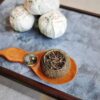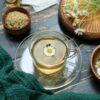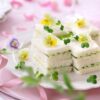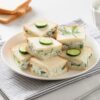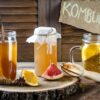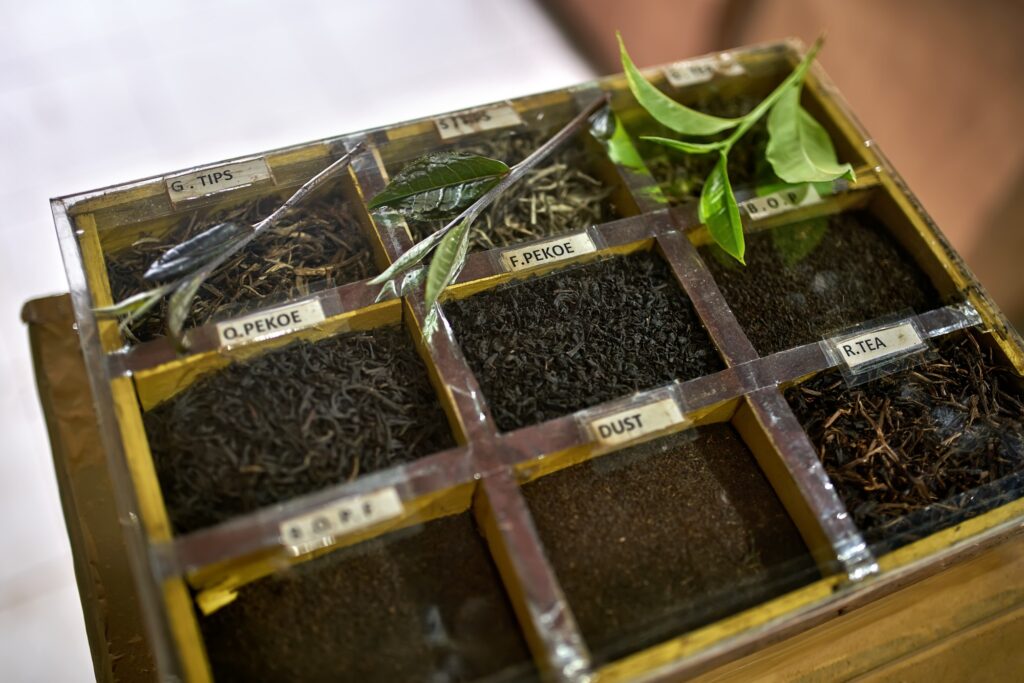
When it comes to black tea, the grading system can be a bit perplexing. What exactly do terms like pekoe, orange pekoe, and souchong mean? How do they impact the flavor and quality of the tea?
Here, we will unravel the mysteries behind black tea grades, exploring the origins, processing methods, and characteristics of each grade. We will highlight the factors that distinguish one grade from another, allowing you to make informed choices when purchasing and brewing black tea.
Join us on this informative journey as we navigate through the intricacies of black tea grading. By the end, you’ll have a deeper understanding of the tea grades available and be better equipped to choose the perfect black tea for your taste and preferences.
The History and Origins of Black Tea Grading
Black tea has a rich history that dates back centuries. It originated in China, where it was first discovered and cultivated. The grading system for black tea can also be traced back to its Chinese roots.
The Chinese were the pioneers in categorizing tea based on its leaf size and quality. They used terms like “pekoe” and “souchong” to differentiate between the various grades of black tea. These terms were borrowed by other tea-producing regions and adapted to their own grading systems.
The grading system for black tea was primarily developed to ensure consistency in quality and help both producers and consumers understand the characteristics of the tea. It allows tea buyers to make informed decisions on the flavor, aroma, and strength of the tea they purchase.
Over time, as black tea production spread to other countries, each region developed its own grading system, often incorporating elements from the Chinese system. Today, you can find variations in black tea grading systems in countries like India, Sri Lanka, and Kenya.
Understanding the history and origins of black tea grading is essential to comprehend the nuances of this fascinating system. Let’s now explore the different factors that determine black tea grades.
The Different Factors that Determine Black Tea Grades
Several factors come into play when determining the grade of black tea. These factors can vary depending on the region and the specific grading system used. However, there are some common elements that are taken into consideration across different grading systems.
- Leaf Size: The size of the tea leaves is one of the primary factors in determining the grade. Larger, whole leaves are often associated with higher-quality teas, while smaller, broken leaves are considered lower grade. The size of the leaves can impact the flavor, strength, and overall quality of the tea.
- Leaf Appearance: The appearance of the tea leaves is another important factor. Leaves that are whole, unbroken, and well-twisted are often considered superior. They indicate that the leaves were carefully processed and handled with care. Leaves with a uniform appearance and color also contribute to the overall grade of the tea.
- Bud Content: The presence of buds, or tips, in the tea leaves is a desirable characteristic, especially in higher-grade teas. Buds are often associated with a sweeter and more delicate flavor profile. Teas with a higher proportion of buds are typically considered more premium.
- Processing Methods: The way the tea leaves are processed can also influence the grade. Factors like oxidation level, rolling technique, and drying methods all play a role in determining the final grade of the tea. Careful processing is essential to preserve the flavor and aroma of the leaves.
By considering these factors, tea producers and graders are able to assign a specific grade to each batch of black tea. Now that we have a general understanding of the factors that determine black tea grades, let’s explore the grading scale itself.
Understanding the Grading Scale – From Pekoe to Souchong
The black tea grading scale can vary depending on the region and grading system in use. However, there are some common terms and grades that you are likely to encounter when exploring black teas. Let’s take a closer look at some of these terms and understand their significance.
- Pekoe: Pekoe is a term that originated from the Chinese word “baihao,” which means white hair. It refers to the young, unopened tea leaves that are covered in fine white hairs. Pekoe is the lowest grade of whole leaf black tea but should not be confused with lower quality. Pekoe leaves are still considered high-quality and can produce flavorful teas.
- Orange Pekoe: Orange pekoe is a term commonly associated with black tea, especially in Western markets. Contrary to popular belief, it has nothing to do with the flavor or the addition of orange fruit. Orange pekoe refers to a larger leaf size, typically consisting of the young leaves and buds. It is a higher grade than pekoe and is often used to produce more delicate and nuanced teas.
- Pekoe Souchong: Souchong is a term used to describe larger, coarser leaves that are lower down on the tea plant. It is a lower grade of black tea compared to pekoe and orange pekoe. Souchong leaves are often used to produce smoky teas, as they have a stronger and more robust flavor. The term “pekoe souchong” is used to indicate a blend of pekoe and souchong leaves.
These are just a few examples of the grading scale used in black tea. There are numerous other terms and grades that can be found, each with its own characteristics and qualities. Now, let’s delve into some of the top grades of black tea and explore their unique features.
Exploring the Top Grades of Black Tea – Orange Pekoe, Flowery Orange Pekoe, and Tippy Golden Flowery Orange Pekoe
Orange pekoe, flowery orange pekoe (FOP), and tippy golden flowery orange pekoe (TGFOP) are among the top grades of black tea. They are known for their superior quality and complex flavor profiles. Let’s take a closer look at each of these grades and understand what sets them apart.
- Orange Pekoe: Orange pekoe, as mentioned earlier, refers to a larger leaf size consisting of young leaves and buds. It is often associated with teas from Sri Lanka (formerly Ceylon) and India. Orange pekoe teas are known for their smooth and well-rounded flavors, with notes of citrus and honey. They are typically medium-bodied and make for a delightful cup of tea.
- Flowery Orange Pekoe (FOP): Flowery orange pekoe is a grade that goes a step further in terms of quality. It consists of whole leaves with a higher proportion of buds. FOP teas are known for their delicate and floral flavors, along with a slightly lighter body compared to orange pekoe. These teas are often prized for their complexity and are enjoyed by tea connoisseurs.
- Tippy Golden Flowery Orange Pekoe (TGFOP): Tippy golden flowery orange pekoe is considered one of the highest grades of black tea. It is characterized by the presence of golden tips, which are the young buds of the tea plant. These buds add a sweetness and complexity to the tea, resulting in a rich and flavorful cup. TGFOP teas are often full-bodied and have a well-rounded taste.
These top grades of black tea exemplify the craftsmanship and expertise that goes into producing high-quality teas. Their unique characteristics make them a favorite among tea enthusiasts. However, there are also lesser-known grades of black tea that deserve our attention.
Lesser-Known Black Tea Grades – Broken Orange Pekoe, Fannings, and Dust
While orange pekoe, FOP, and TGFOP are widely recognized and appreciated, there are other black tea grades that may not be as well-known. These grades, although often used in tea bags and blends, can still offer a satisfying tea-drinking experience. Let’s explore some of these lesser-known grades:
- Broken Orange Pekoe (BOP): Broken orange pekoe consists of broken tea leaves, typically smaller in size compared to whole leaf grades. BOP teas brew quickly and produce a strong, robust cup of tea. They are commonly used in tea bags and are favored for their bold and hearty flavors.
- Fannings: Fannings are even smaller tea particles compared to BOP. They are often used in tea bags and are known for their quick infusion and strong flavor. While not as complex as whole leaf teas, fannings can still offer a satisfying cup of black tea, especially if you prefer a stronger brew.
- Dust: Dust is the smallest grade of black tea, consisting of fine particles left after the other grades have been sorted. It is often used in tea bags and is prized for its quick infusion and strong flavor. Dust teas are ideal for those looking for a bold and robust cup of tea without the need for a longer brewing time.
These lesser-known black tea grades may not have the same prestige as their whole leaf counterparts, but they still have their own unique qualities and can be enjoyed in different tea-drinking scenarios.
The Significance of Leaf Size and Appearance in Black Tea Grading
Leaf size and appearance play a crucial role in black tea grading. They offer insights into the quality and characteristics of the tea. Let’s explore why these factors are significant in determining the grade of black tea.
- Flavor and Aroma: The size and appearance of the tea leaves can impact the flavor and aroma of the brewed tea. Larger, whole leaves often result in a more nuanced and complex flavor profile, while smaller, broken leaves tend to produce a stronger and bolder cup. The appearance of the leaves can also provide clues about the flavors and aromas that can be expected.
- Brewing Time: The size of the tea leaves can affect the brewing time required to extract the desired flavors. Whole leaves typically require a longer steeping time to fully infuse, allowing the flavors to develop gradually. Smaller leaves, on the other hand, release their flavors more quickly, resulting in a faster brewing process.
- Visual Appeal: The appearance of the tea leaves can also contribute to the overall experience of drinking black tea. Whole leaves that are well-twisted and have a uniform appearance are visually appealing and convey a sense of quality. The appearance of the leaves can also influence the perception of the tea’s flavor and quality.
Considering the significance of leaf size and appearance in black tea grading, it is clear why these factors are carefully considered by tea producers and graders. They provide valuable information about the tea’s characteristics and help consumers make informed choices when selecting their preferred black tea grade.
How Black Tea Grades Affect Flavor, Aroma, and Strength
Black tea grades have a direct impact on the flavor, aroma, and strength of the brewed tea. Each grade offers a unique set of characteristics that can be appreciated by different tea drinkers. Let’s explore how black tea grades affect these aspects:
- Flavor: The flavor of black tea can vary greatly depending on the grade. Higher-grade teas, such as orange pekoe and FOP, often have more delicate and nuanced flavors. They can exhibit floral, fruity, or even malty notes, depending on the specific tea and its origin. Lower-grade teas, like BOP and fannings, tend to have a stronger and bolder flavor profile, with robust and sometimes earthy flavors.
- Aroma: The aroma of black tea is another aspect that can be influenced by the grade. Higher-grade teas often have more pronounced and complex aromas, with floral or sweet notes. The aroma can be enhanced by the presence of buds or golden tips in the tea leaves. Lower-grade teas may have a more straightforward aroma, characterized by bold and robust scents.
- Strength: The strength of black tea is determined by factors like leaf size, grade, and brewing time. Whole leaf grades, such as orange pekoe and FOP, tend to have a medium strength, offering a balanced and satisfying cup. Smaller leaf grades, like BOP and fannings, can provide a stronger and more robust brew. The strength of the tea can be further adjusted by the brewing time and the amount of tea leaves used.
Understanding how black tea grades affect flavor, aroma, and strength allows you to choose the perfect tea to suit your taste preferences. Whether you prefer a delicate and nuanced cup or a bold and robust brew, there is a black tea grade that will cater to your palate.
Tips for Selecting and Brewing Black Tea Based on Grades
Now that we have explored the different black tea grades and their characteristics, let’s discuss some tips for selecting and brewing black tea based on these grades:
- Consider Your Preferences: Think about the flavors and strengths you enjoy in a cup of tea. If you prefer a lighter and more delicate brew, opt for higher-grade teas like orange pekoe or FOP. If you prefer a stronger and bolder flavor, consider trying lower-grade teas like BOP or fannings.
- Experiment with Different Grades: Don’t be afraid to explore different black tea grades and discover new flavors. Each grade offers a unique taste experience, and you may find unexpected delights in teas you haven’t tried before. Try sampling teas from different grades to broaden your tea palate.
- Adjust Brewing Parameters: The brewing parameters, such as water temperature and steeping time, can be adjusted based on the grade of black tea you are using. Higher-grade teas may require lower water temperatures and shorter steeping times to preserve their delicate flavors. Lower-grade teas can withstand higher temperatures and longer steeping times to extract their bold flavors.
- Store Tea Properly: Regardless of the grade, it is important to store your black tea properly to maintain its freshness and flavor. Keep your tea leaves in an airtight container away from light, moisture, and strong odors. This will help preserve the quality of the tea for a longer period.
By following these tips, you can enhance your black tea-drinking experience and make the most of the different grades available. Remember that everyone’s taste preferences are unique, so don’t be afraid to experiment and find your perfect cup of black tea.
Celebrating the Diverse World of Black Tea Grades
Black tea grading is a fascinating and intricate system that allows us to explore the diverse world of black tea. From the delicate and refined orange pekoe to the bold and robust broken orange pekoe, each grade offers a unique experience for tea enthusiasts.
By understanding the factors that determine black tea grades, as well as the impact they have on flavor, aroma, and strength, you can make informed choices when selecting and brewing black tea.
So, go ahead and embark on your black tea journey, exploring the wide range of grades and flavors available. Whether you prefer a cup of orange pekoe to start your day or a bold and invigorating broken orange pekoe in the afternoon, there is a black tea grade to suit every palate. Enjoy the adventure!

